
ASC Museum Camera Collection
Expert photography showcases some of the unusual, unique and rare items in the Society's stash.

The ASC Museum camera collection was established by esteemed Society member Charles G. Clarke, who understood that “obsolete” motion picture units that were at the time being thrown into dumpsters should be preserved for the sake of cinema history. It was then expanded upon by Arthur C. Miller, ASC. Fortunately, many fellow ASC members and their descendants have since added to the collection, which now numbers more than 300 unique items — some very rare and unusual — also including personalized light meters and filter sets, specialty lenses and even Cinex exposure test strips from films including Citizen Kane (Gregg Toland, ASC) and The Taking of Pelham One Two Three (Owen Roizman, ASC)
Today, this collection is curated and maintained by Steve Gainer, ASC, ASK.
Richard Edlund, ASC and collaborator Dave Inglish recently set up a photo shoot at the ASC Clubhouse in Hollywood to document a portion of the Society’s collection for the Academy of Motion Pictures Arts and Sciences, where Edlund is on the board of governors as a member of their Visual Effects Branch.
The video here offers a brief behind-the-scenes look at the setup that Edlund and Inglish employed at the ASC Clubhouse, while a portion of their work can be found below with information about each camera.
(1) Lumière Cinématographe
Made in 1895, this rare hand-cranked unit is currently on loan to the ASC from the Cinémathèque Française. Inspired by the Edison Kinetoscope (introduced in 1891), leading French photographic plate makers Louis Jean and Auguste Marie Louis Nicolas Lumière devised and patented their own motion picture camera — which also functioned as a projector and printer. About 800 of these wood and cloth cameras were made and used to shoot some of the first motion pictures projected for a paid public audience, including the primitive documentary shorts Workers Leaving the Lumière Factory and Arrival of a Train at a Station. The small box at the top of the unit holds about 55' (17m) of film, which results in about a 50-second taking capability.



(2) Pathé Studio
This iconic camera was the primary unit used from the early to mid Silent Era, based on a patented Lumière design sold to Pathé, it was made primarily of wood, fabric and leather and very lightweight, even with the 400' magazines. Some 1,700 were reportedly produced and the Pathé Studio was used to shoot such groundbreaking features as Birth of a Nation (1915; photographed by Billy Bitzer, ASC) and the serial The Perils of Pauline (1914; Arthur Miller, ASC, whose own Pathé Studio was recently donated our collection). The hand-crank camera was notorious for building up static electricity charges during use, which would ruin footage by creating white streaks in the emulsion — a dilemma that in part lead cinematographers to form (and name) The Static Club of America, which would strive to diagnose and troubleshoot such technical dilemmas and eventually become the ASC.




(3) Bell & Howell 2709
The first all-metal, commercially available motion picture camera, the hand-cranked Bell & Howell 2709 was produced between 1912 and 1958. It quickly dominated the market long held by the Pathé Studio (quickly relegated to second camera work), and by 1919, nearly 100 percent of the equipment used to make movies in Hollywood was manufactured by the company, which was formed in Chicago but later moved to Los Angeles.

The 2709 was used to shoot countless shorts, newsreels and feature films, including the silent classics Ben-Hur: A Tale of the Christ (1925; photographed by Rene Guissart, ASC) and Charlie Chaplin’s The Gold Rush (1925; Rollie Totheroh, ASC). While more than 1,200 were built, it’s now rare to find a 2709 in its original configuration, as many were modified for visual effects and animation work. Here is the ASC’s example:




Notes Richard Edlund, ASC, “Cinematographers hated the B&H viewfinder, because it showed the image upside down. All of them were replaced by Mitchell viewfinders which had a prism system that righted the image. Nearly all replaced the B&H matte box with Mitchell ones as well. It’s very difficult to find those original B&H accessories, as well as their tripods and pan heads which were also dumped in favor of the much better designed Mitchell ones. Those Mitchell accessories saw little or no design changes from 1922 through the 60s when nearly all rack-over BNCs were modified and became reflex cameras and were used mostly for TV shows.”
(4) Akeley “Pancake”
Devised by Carl Akeley (1864-1926), this unusual, rugged unit was designed specifically for field use, as its inventor was an avid traveller and naturalist and wanted a camera that could survive being used under harsh conditions. Commonly referred to as the “Pancake” for obvious reasons, an Akeley was used in Arctic weather to photograph Robert Flaherty’s pioneering documentary Nanook of the North (1922). Due to the unique rotary design of the camera’s body, the Akeley also boasted a 230-degree shutter, allowing it to be used in relatively low light. The Akeley never caught on in Hollywood as an “A” camera, but was frequently used for specialty action work, such as the extensive aerial photography by Elmer G. Dyer, ASC in Wings (1927), Hell’s Angels (1930) and Only Angeles Have Wings (1939). It was also used to shoot portions of The Ten Commandments (1923). Once in the inventory at Fox Movietone News, this particular camera was donated by Frank Zucker, ASC.


(5) Éclair Camerette
This particular camera was donated to the collection by Caleb Deschanel, ASC, who obtained it from friend and fellow Society member Haskell Wexler. Both used the camera extensively on numerous feature films and other projects (including Whose Afraid of Virginia Woolf?, Medium Cool and The Black Stallion). Introduced in 1947, the French-made Camerette (or Caméflex) offered reflex viewing, a three-lens turret, a quick-change magazine system and the ability to be converted easily from 35mm to 16mm. Though noisy, it's a compact, well-balanced unit that was perfect for hand-held work, which became popularized after World War II. The affordable Camerette was also prized among the filmmakers of La Nouvelle Vague, and used to great effect in the 1960s by cinematographers including Raoul Coutard (Breathless, The Soft Skin, Alphaville).

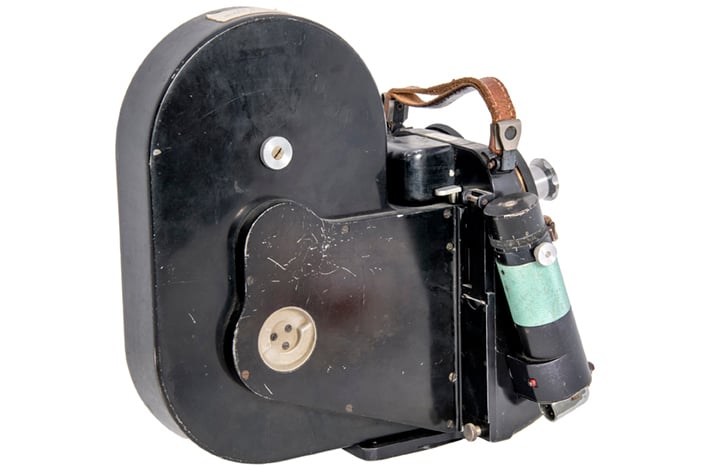


(6) Debrie “Le Parvo”
This hand-cranked unit has been described as “the Rolls Royce of European silent cameras.” Developed in France by Joseph Jules Debrie in 1908 and built by his son Andre, “Le Parvo” (meaning small) was relatively compact for the era and held 390' (120m) of 35mm film in an internal co-axial magazine. It was used to photograph such classic features as F.W. Murnau’s Nosferatu (1922; shot by Fritz Arno Wagner and Günther Krampf) and Sergei Eisenstein’s Battleship Potemkin (1925; Eduard Tisse and Vladimir Popov). The camera could also be converted for two-color Kinemacolor photography by installing a red/orange and green filter wheel behind lens.


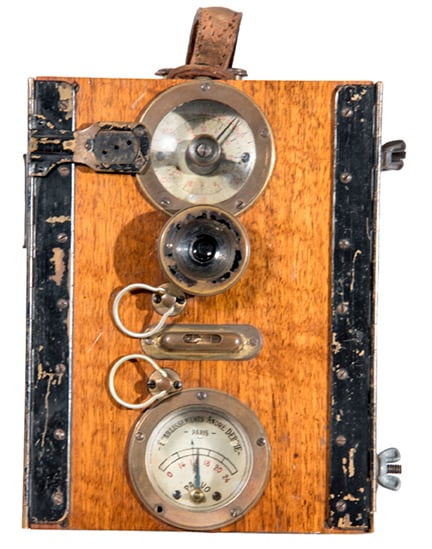
While early versions like this one above were made of polished wood, the ASC also has a later model made of metal:
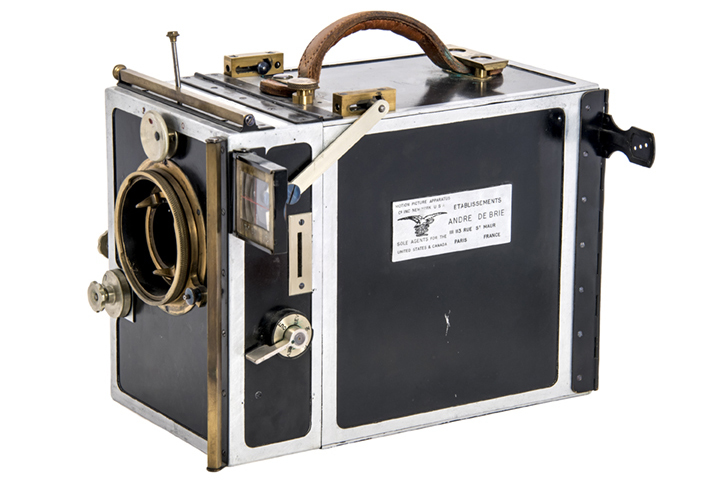


(7) Arriflex 435 ES
While it may seem strange that a camera as recent as the Arri 435 ES is part of the ASC’s collection, as many filmmakers around the world would be happy to be shooting with one today, the owner of this particular unit — commercials expert Bill Bennett, ASC — believed it to be a great piece to allow for direct comparison and generate conversation. The 435 model was developed and then introduced by Arri in 1995 to replace the Arri 35 III (among other cameras) for general MOS work, and was immediately adopted for 2nd unit shooting, commercials and music videos and visual effects photography, among many other uses. The “ES” designates an electronic shutter capability that allows for precise, continuous control during filming, making it easy to photograph “speed ramp” shots and other in-camera effects. In recognition of the achievements of the 435 system, AMPAS awarded Arri a Scientific and Engineering Academy Award in 1999.



(8) Panavision R-200 (PSR)
The Panavision Silent Reflex was the company’s first camera. A blimped, heavily modified Mitchell NC unit designed for studio use, the PSR was introduced in 1967 for feature films but later found a long life in shooting multi-camera television series well into the early 1990s, including Murphy Brown (Gil Hubbs, ASC), Cheers (John Finger) and Seinfeld (Wayne Kennan, ASC).

The “200” refers to the camera’s 200° shutter. Of great importance was the way the camera was house inside the blimp — floating above the floor — making for very quiet operation. Fewer than 70 PSRs were produced, and this one is on loan to the ASC from Panavision:




(9) Panavision Panaflex Gold
Unveiled in 1972, the original Panaflex was a 35mm self-blimped, hand-holdable studio reflex camera. The line would evolve and be improved in the following years with the releases of the Panaflex Gold, Panaflex X, Panaflex Gold II, Panaflex 16 “Elaine” and Panaflex Platinum.
Lightweight and compact, the Gold model (as seen below) was easily converted from studio mode to a hand-holdable configuration, offered an illuminated “Panaglow” ground glass for shooting in low-light conditions and boasted a variable shutter (200°-50°). It quickly became an industry standard, and was used to shoot countless feature films, including Blade Runner (1982), Indiana Jones and the Temple of Doom (1986) and The English Patient (1996).





(10) Cine Simplex Model D
This 35mm camera was custom built for 20th Century Fox by the Cine Simplex Corporation of Syracuse, NY. Nicknamed the “Fox Camera,” it was the make used to shoot such films as director John Ford’s How Green Was My Valley (1941), featuring Oscar-winning black-and-white photography by Arthur C. Miller, ASC.
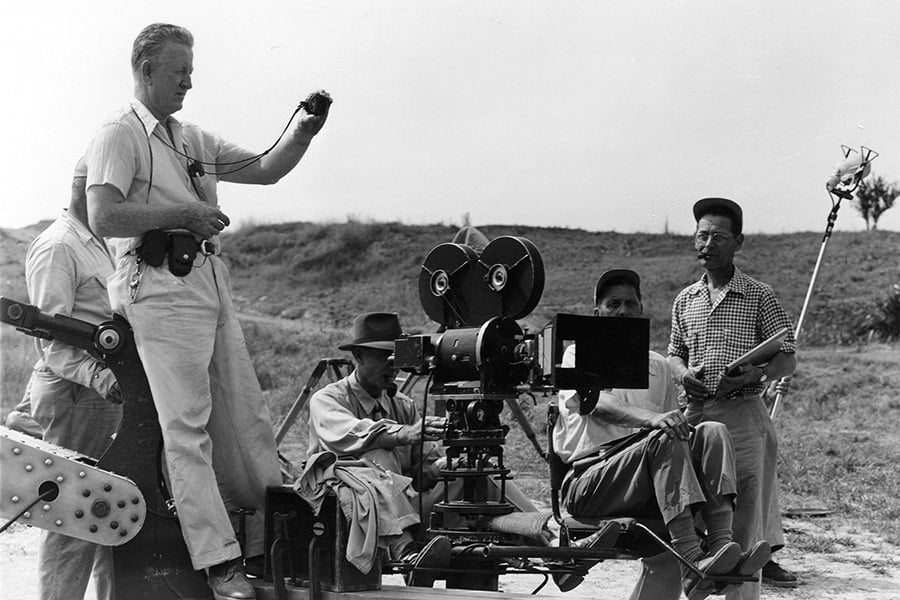
Later, this was the first camera converted to use the studio’s proprietary Cinemascope anamorphic system, used by Leon Shamroy, ASC to shoot The Robe (1953). The “Fox” had a unique rackover system. Most systems slide the camera horizontally, aligning the lens over the eyepiece to check through-the-lens critical focus and exact framing. This unit features a patented system that allowed the entire camera to rotate (as seen below) to allow for this.




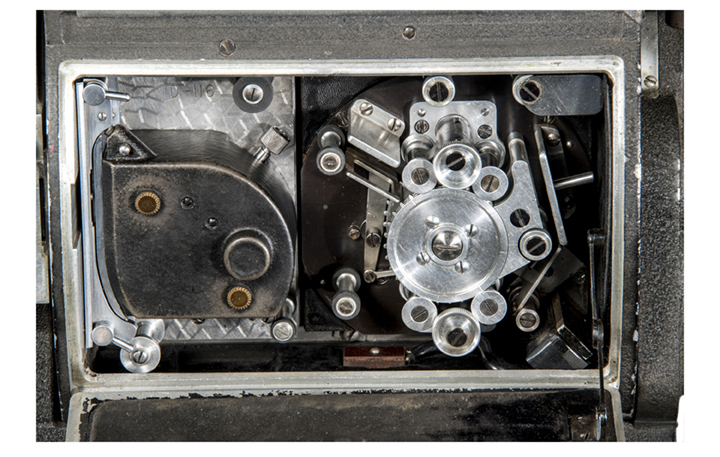
AC thanks Richard Edlund and Dave Inglish for their invaluable efforts in making this report happen.
Additional historical and technical text by Mark Kirkland.






